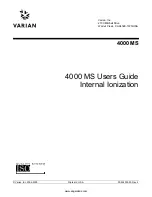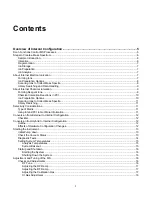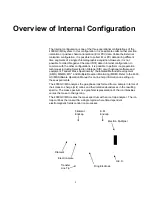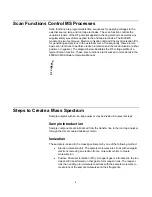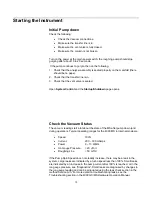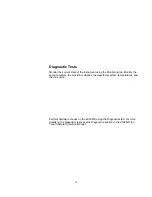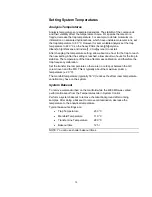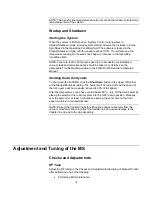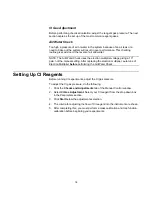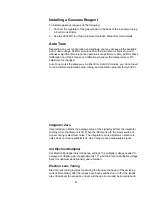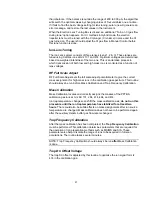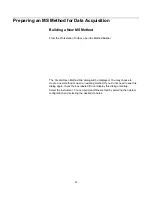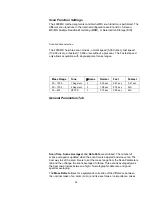
11
Scanning Ions to Collect Mass Spectra
The scanning process for chemical ionization is similar to that for electron
ionization. After ionization, trapping, and ion preparation steps, ions are scanned
out to the conversion dynode and electron multiplier. Mass scanning is
implemented by increasing the RF voltage on the ring electrode; the mass
spectrum is collected in order from low to high mass over the user-designated
scan range. In positive modes, electrons are ejected from the conversion
dynode, held at -10,000 V, and repelled to the electron multiplier. In negative
mode, positive ions are ejected from the conversion dynode, held at +10,000 V,
and repelled toward the electron multiplier. The signal is amplified by ~10
5
by the
electron multiplier and sent through an integrator to collect an intensity for each
m/z. MS data are stored as sets of ion-intensity pairs for each m/z over the
acquired mass range. A complete mass spectrum is stored for each analytical
scan. There is no prescan in internal PCI; the ionization time is calculated based
on the base peak intensity of the previous scan. Ions are formed for this
ionization time and the analytical scan is carried out.
Library Searching
The 4000 MS has small CI libraries generated using internal configuration ion
trap GC/MS systems. The libraries are organized by the CI reagent, which
include methane, methanol, and isobutane.
Selectivity Considerations
Type of Matrix
An advantage of chemical ionization is selectivity. In PCI, hydrocarbons have a
poor response in methane CI. It is easier to locate target compounds in a sample
contaminated with hydrocarbons using methane PCI than using EI. Because of
these selectivity considerations, the time spent to develop a method using the
different ionization and ion preparation options is well spent.
Using EI and PCI to Get More Information
Generating EI and CI data on a single sample gives both the ion-intensity
fingerprint information allowing library searching as well as the molecular weight
information to confirm species identification. Fatty acid methyl ester (FAME)
analysis is an example. Under EI conditions, the FAME fragmentation is
extensive and molecular ion intensity is weak. Using CI, the molecular weight is
obvious and the most intense ion is M+1.
Because the 4000 MS is able to switch between EI and CI in a single run, the
best analytical conditions can be used for a given compound.
NOTE: Wait several seconds to switch between EI and CI. The CI segment
should not be less than 60 seconds wide and the CI peak should be at least 20
seconds into the segment to allow CI reagent stabilization.
Summary of Contents for 4000 MS
Page 2: ......

